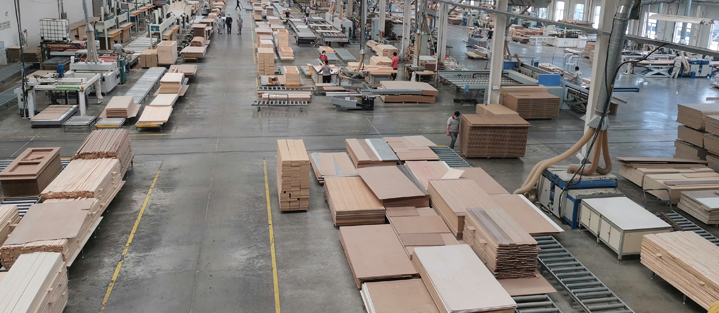Traditional interior doors were often simple and utilitarian, designed just to separate rooms. However, the contemporary home demands more doors that contribute to the overall décor, enhance natural light flow, and even provide additional functionality. The modern wood door manufacturer has responded to this by integrating unique design features such as glass panels, custom carvings, and mixed-material finishes.
At an Interior Door Factory, innovation is a daily practice. This includes exploring different wood species, finishes, and treatments that add character and durability to doors while maintaining cost-effectiveness. From sleek minimalist designs to ornate, handcrafted doors, manufacturers now cater to a wide variety of tastes and requirements.
Materials and Techniques Driving Design Innovation
One of the key drivers of innovative interior door designs is the advancement in materials and manufacturing techniques. Engineered wood, reclaimed timber, and composite materials offer manufacturers more flexibility and sustainability options. These materials can mimic the natural grain of hardwood while being more affordable and eco-friendly.
New finishing technologies allow for paint-free or textured surfaces that enhance durability and require less maintenance. In addition, CNC machining and laser cutting enable manufacturers to produce intricate patterns and designs with precision, which were once labor-intensive and expensive.

Customization as a Growing Trend
Customization has become a crucial element in door manufacturing. Clients want doors tailored to their specific style, size, and functional needs. Many interior door factories now provide made-to-order services that allow customers to select from a range of designs, wood types, finishes, and hardware options.
This trend reflects the broader movement towards personalized living spaces where every element, including doors, reflects individual taste. Offering bespoke options gives manufacturers a competitive edge and helps customers feel more connected to their homes.
Balancing Aesthetics with Functionality
While design innovation is vital, an effective interior door must also deliver practical benefits. Noise reduction, thermal insulation, and durability remain important considerations. The integration of modern locking systems and smart technology is also becoming popular, allowing doors to offer enhanced security and convenience.
Wood, as a material, naturally excels in many of these functional aspects. It provides insulation, sound dampening, and a timeless appeal. Skilled wood door manufacturers understand how to blend these qualities with modern aesthetics, creating products that satisfy both form and function.
Environmental Considerations in Modern Door Manufacturing
In addition to aesthetic innovation, many wood door manufacturers are placing increased emphasis on sustainability. The use of responsibly sourced wood and eco-friendly finishes has become a standard practice rather than an exception. Sustainable manufacturing processes not only reduce environmental impact but also appeal to environmentally conscious consumers who prioritize green building materials.
Moreover, advances in manufacturing technology enable factories to minimize waste through precision cutting and optimized use of raw materials. This eco-conscious approach aligns with global efforts toward sustainable development and reflects the responsibility manufacturers have toward future generations.
Innovation in interior door manufacturing is transforming how we perceive and utilize doors within our living and working spaces. An interior door factory that embraces new design trends, materials, and technologies can provide versatile products that meet evolving market demands.
By focusing on innovation, customization, and the ideal balance between beauty and utility, the interior door industry is set to continue evolving in exciting ways.

 English
English 中文简体
中文简体